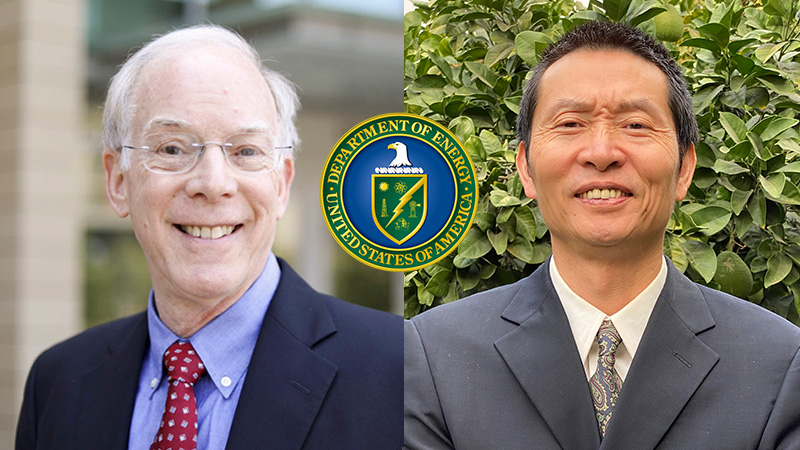UCLA Materials Scientists Awarded Department of Energy Grant to Develop 3D-Printed Lithium Ion Batteries

UCLA Samueli
Bruce Dunn (left) and Morris Wang (right) have been selected to receive a grant from the U.S. Department of Energy.
Materials scientists at the UCLA Samueli School of Engineering along with colleagues at Lawrence Livermore National Laboratory (LLNL) have been selected to receive a $900,000 grant from the U.S. Department of Energy (DOE) to demonstrate a new design and 3D-printing process for manufacturing lithium-ion batteries.
The grant was part of a $57.9 million program announced in June to fund research into clean energy technologies. The UCLA project’s principal investigator is materials science and engineering professor Bruce Dunn, who holds UCLA’s Nippon Sheet Glass Company Chair. He is also UCLA Samueli’s associate dean for research and physical resources. Materials science and engineering professor Morris Wang, who joined UCLA from LLNL in 2020, is the co-principal investigator.
The team’s eventual goal is to improve lithium-ion batteries by increasing the available power, speeding up charging time, and making them cheaper to manufacture while wasting less material in the process. 3D printing allows for the creation of a more intricate interior battery structure that can store more power — a development critical to the new manufacturing process.
Lithium-ion batteries, with their excellent energy-to-weight ratios, are already ubiquitous in phones, laptops, electric vehicles and a range of other consumer products. However, there are limits to the power they can provide and how fast they can be charged. More powerful lithium ion batteries could lead to the development and adoption of more clean electric vehicles, as well as new energy storage technologies for the electric grid.
The new project builds on a previous collaboration between UCLA and LLNL that led to the development of several cathode ink compositions and demonstrated excellent performance in 3D-printed cathodes, which are the part of the battery that contains lithium ion. The UCLA group has been developing and characterizing 3D battery materials that offer high energy and power density, while researchers from LLNL have made several advances in 3D-printed materials that offer more design freedom without employing expensive and wasteful fabrication processes.
